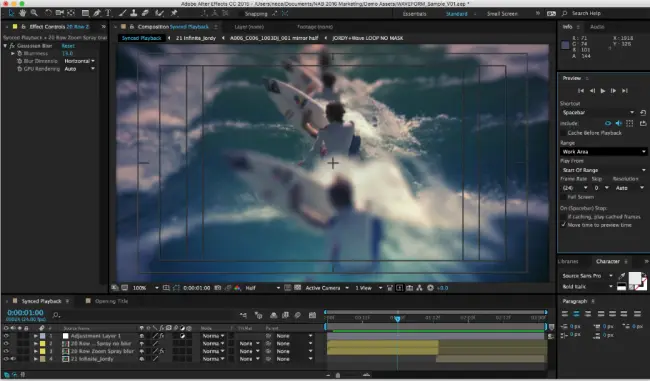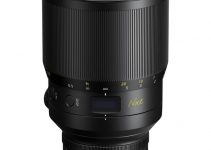Adobe just released the latest update (2015.3) for their Creative Cloud applications for photo, video and audio including popular NLE Adobe Premiere Pro CC and After Effects. It’s a bit strange that instead of calling the updates Creative Cloud 2016, the company has chosen to continue with the 2015.x pattern in the title, but that’s hardly a complaint, it just makes things a bit confusing for someone uninitiated like me. So, what’s new in Adobe Creative Cloud 2015.3 June 2016 update? Quite a lot actually. The full update for each app is beyond the scope of this article and as we’re mostly interested in video editing and colour correction here – we’ll take a look at what’s new in Premiere Pro CC and After Effects.
Adobe Premiere Pro CC 2015.3 June Update – New Features
- Premiere Pro Proxy & Ingest Workflow
Premiere Pro now supports proxy media creation, allowing you to easily switch between original/high-resolution and proxy/low-resolution clips. Great news also for RED Weapon and Raven shooters – Adobe Premiere Pro CC 2015.3 also supports as of now REDCODE Raw up to 8K from RED DSMC2 cameras like the Weapon, Scarlet-W (5K) and Raven (4.5K) alongside other 8K, HD or HFR formats.
Confirmed by Phil Holland below:

Due to the intensiveness of super high resolution files in 4K+ resolutions, using lower-resolution proxies can speed up editing, while maintaining the ability to switch back to the original high resolution media for final output.
With proxy creation, you can work with high-resolution media flexibly, across different devices (for example, on lightweight devices that are slower and have less storage). Switching between proxy/low-resolution and original/high-resolution files has never been easier or more fluid.
Users can now start editing footage immediately while it’s being imported in the background, right from the media card ingested into the computer. Once the copy is complete, Premiere Pro switches to using the copied media—allowing the camera media to be freed up for use elsewhere.
- VR Video Workflow Support
VR video workflow support allows editors to move around virtually inside spherical media using new monitor controls or by click-dragging on the video for a complete preview of the VR video playback experience. Premiere Pro export properly flags the file so VR-capable video players such as YouTube will automatically recognise it. Stereoscopic VR media preview is possible by switching into anaglyph mode (requires anaglyph 3D glasses).
- New Enhancements to Lumetri Color Tools
With HSL Secondaries editors can easily select a specific range of colours to make adjustments to. Premiere Pro also now offers colour grading control surface support, which gives users finer control over the subtleties of the colour grade than what can be achieved with a mouse and keyboard.
Using the White Balance eyedropper feature, you can now set the white balance within the frame with a single click. Users can also set the brightness of the scopes to one of three levels to make them more readable in various lighting conditions. Apply preset SpeedLooks with just one click.
- Control Surface Support
- HSL Secondaries
- Lumetri Scopes Enhancements
- New SpeedLooks Linear Look Bundle
- A toggle that allows you to instantly zoom all the way in on the Timeline to view individual frames, and back out to the previous zoom level.
- A new shortcut to generate peak files for audio waveforms. – This feature is useful when you have the Automatic peak file generation preference disabled.
- New Shortcut to Add/Remove a keyframe.
- New Shortcut to Nudge keyframe in time by one frame.
- New Shortcut to select the Next/Previous keyframe.
- New Shortcut to Increase/Decrease keyframe value.
For a full list of improvements for Premiere Pro CC 2015.3 head over here.

After Effects CC 2015.3 (13.8) updates are focused on improving performance and speed. From import to final render, the experience of working in AE has been refined.
- Enhanced video and audio playback: After Effects CC 2015 (13.8) uses a new playback architecture to deliver real-time playback of cached frames with synced audio. The new architecture is shared with other Adobe applications, like Premiere Pro and Audition.
- Effect rendering on the GPU: The Lumetri Colour, Gaussian Blur, and Sharpen effects can now render using your computer’s GPU. This improves rendering performance for these effects by 2x-4x over rendering using only the CPU (depending on the frame being rendered and the speed of your GPU). GPU effect rendering is controlled via the new Video Rendering and Effects option in the Project Settings dialog.
- Performance improvements: Many small changes under the hood include faster import and caching of image sequences, asynchronous drawing of viewer panels, faster opening of large projects, improved expression caching, and more.
- Additional native format support: Apple ProRes QuickTime files can be decoded on Windows without needing QuickTime installed on the system. RED camera raw file decoding now supports RED Scarlet-W, Raven, and Weapon cameras, including 8K .r3d footage.
- Lumetri Colour effect improvements: The Lumetri Colour effect can now render using your computer’s GPU, and includes new HSL Secondary controls and new SpeedLooks presets.
- Gaussian Blur effect improvements: The Gaussian Blur effect has been updated to a new version. The Repeat Edge Pixels option from the Fast Blur effect has been added, and the effect can now render using your computer’s GPU. This version of Gaussian Blur replaces both the previous Gaussian Blur (Legacy) effect and the Fast Blur effect, which are still available but have been moved to the Obsolete category.
- Add compositions to Adobe Media Encoder with render settings: You can now send compositions from the Render Queue to the Adobe Media Encoder queue with the options you choose in the Render Settings dialog. When you click the new Queue in AME button in the Render Queue panel, queued render items are added to Adobe Media Encoder. Compositions will be rendered by Adobe Media Encoder with the render settings you chose in After Effects.
- Read-only collaboration with Creative Cloud libraries: Assets in Creative Cloud libraries can be set to read-only, so they can be shared but not changed or deleted.
- Libraries panel improvements: The new Libraries workspace makes it easier to search and add assets to your project. Find the right content fast using filtered search for Adobe Stock, display of length and format for Stock video, and links to video previews.
- Scroll panel tabs using the Hand tool: When a panel group has more tabs than you can see at once, you can now scroll the tabs by panning with the Hand tool. For example, hold the spacebar key to activate the Hand tool, then click in the tab well and drag left or right, the same way you would to pan in the Composition panel.
- Maxon CINEWARE 3.1: The latest version of Maxon’s CINEWARE plug-in includes bug fixes, enhanced OpenGL rendering, and scene coordinate matching.
- Maxon Cinema 4D Exporter: The Maxon Cinema 4D Exporter now exports animated 3D text and shape layers into the .c4d file. 3D text layers can be exported as extruded spline objects that retain animation fidelity, or as extruded text objects that preserve the ability to edit the text in Cinema 4D.
For those who will be updating to 2015.3, which is free, Adobe says that 2015.3 requires an update to the project file format, and as such projects saved in 2015.3 can not be opened in previous versions. So best to keep that in mind before you run into some compatibility issues.
Head over to Adobe to learn more and get the right subscription plan for CC if you don’t have it yet.
Disclaimer: As an Amazon Associate partner and participant in B&H and Adorama Affiliate programmes, we earn a small comission from each purchase made through the affiliate links listed above at no additional cost to you.



